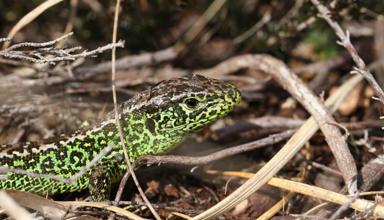This guest article explains why people in Wales should care about their peatlands, the measures being taken to protect them, and the challenges and opportunities that lie ahead.
It has been written by Dr Victoria Jenkins, Associate Professor, HRC School of Law, Swansea University and Dr Jonathan Walker, Senior Research Officer, Faculty of Science and Engineering, Swansea University. Victoria and Jon have both held fellowships with UK Research and Innovation to consider issues related to peatlands and have published their work on the challenges and opportunities for peatlands in Wales.
The views are those of the authors, not Senedd Research.
Why are Welsh peatlands important?
Peatlands cover 4% of Wales’ land area or approximately 90,000 hectares. Peatlands can be enjoyed through recreational and educational activities within nature reserves in lowland areas, or hiking in the ‘wilderness’ of the uplands. Peatlands are also significant to Wales’ culture providing inspiration for stories and songs, travel routes, and place names.
Peat soil is carbon rich and a significant carbon store, which, in good condition, can secure and store carbon dioxide from the atmosphere. However, if subject to degradation or wildfire, peat will release greenhouse gases. Therefore, sustainable peatland management and restoration both have a role to play in meeting Wales’ target to be Net Zero by 2050.
Peatland habitats also support unique and rare assemblages of animals and plants including some of our rarest species, such as the Marsh Fritillary butterfly. Peatlands often sit at the very tops of river catchments and play an important role in the condition and functioning of rivers, contributing to water quality, drinking water supplies and flood prevention. Therefore, sustainable management of peatlands is important in helping to deliver the Welsh Government’s target to conserve 30% of land, freshwater and sea in Wales for nature by 2030.
Sadly, most of our peatlands are not in a good ‘wet’ and ‘boggy’ state that signals a healthy peatland. Restoring peatlands, through processes such as ‘rewetting’ is a relatively inexpensive means of securing and enhancing the multiple benefits peatlands provide our society.
What are we doing in Wales to protect our peatlands?
In 2020, the previous Welsh Government funded Natural Resources Wales (NRW) to deliver a National Peatlands Action Programme for the period 2020-2025. Its ambition is to ensure all peatlands with semi-natural vegetation are subject to favourable management/restoration and to restore a minimum of 25% of the most modified areas of peatland.
One of the first steps in this action plan was for NRW to map peatlands across Wales to help identify areas for peatland restoration. Other work currently underway is to increase understanding of the best techniques for peat restoration and to support people and organisations to get involved.
The scientific community in Wales is making good progress on developing a reliable and robust evidence base on peatlands, although there are still important gaps. For example, there is no agreement on how to measure the contribution of peatlands to Net Zero targets.
Sustainable peatland management is also supported by law and policy on climate change and nature recovery. For example, peatland restoration is included as a key measure in reducing greenhouse gas emissions in the Low Carbon Wales strategy. The protection of peatlands is also one of the primary reasons for the designation of the 169 Sites of Special Scientific Interest (SSSIs) in Wales to protect nature.
What challenges and opportunities lie ahead?
The UK Climate Change Committee reports that Wales needs to increase its targets on peat restoration. To do so we need a better understanding of the challenges that lie ahead, many of which relate to the problems of competing land-use. This includes: tree planting to meet Net Zero targets, establishing new renewable energy installations, such as windfarms, and the intensification of farming activities such as grazing. All these land uses can be damaging to peatland habitats.
The way forward
Current action on peatlands in Wales is focused on restoration of the most readily recoverable areas of peatland. There is a need to scale-up this activity, alongside the sustainable management of shallower and smaller areas of peat. Recent research suggests that this could be facilitated by greater co-ordination between organisations across Wales, such as local authorities, other public sector organisations and the third sector. More collaborative working could help support funding bids for peat restoration and the development of research on the way peatlands function.
More widespread sustainable peatland management would be helped by clearer policy guidance from the Welsh Government about its significance to nature recovery and climate change goals. Significant progress has been made by a recent update to land use planning policy on the nature emergency which highlights the contribution of peatlands to ecologically resilient networks. However, the complexities of interactions between peatlands, tree-planting, renewable energy and agriculture is still not clear in all Welsh policy documents.
Some barriers to the development of sustainable peatland management are also created by current legal frameworks. For example, habitat law focuses on the protection of endangered species and vulnerable but pristine habitats. Amending these legal frameworks to support the designation of sites for restoration purposes or, indeed, their significance for wider ecological resilience, could help facilitate sustainable peatland management.
The anticipated Sustainable Farming Scheme, to be introduced under the Agriculture (Wales) Act 2023, has the potential to enhance sustainable peatland management. However, the significance of the scheme will depend on the detailed rules, which are due to be published soon.
Article by Dr Victoria Jenkins, HRC School of Law, Swansea University and Dr Jonathan Walker, Faculty of Science and Engineering, Swansea University






